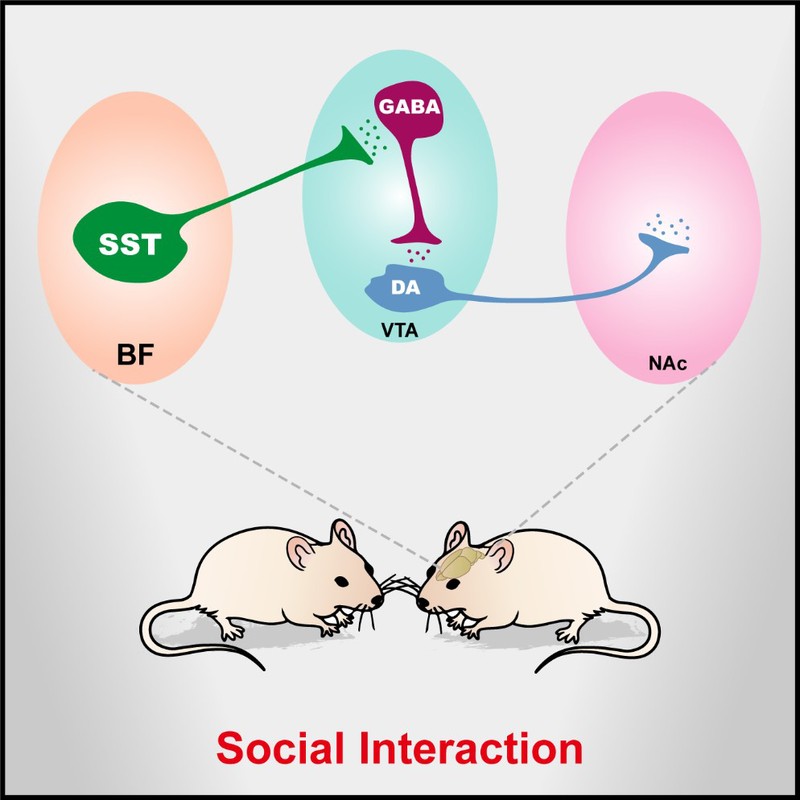We are living in a highly socialized world with immense mental pressure. Prosocial behavior accounts for a large amount of our daily life and is fundamental to our physical and mental health. However, social disorder is a commonly symptom observed in various neurodegenerative, neuropsychiatric and neurodevelopmental disorders,while placing a heavy burden on the families and society of patients. Considering that, it is urgent to expand the frontiers understanding of basic science and clinical medicine research by deciphering the neural mechanisms underlying prosocial behavior is of great importance in terms of both .
To dissect neural circuit mechanisms of social interaction, the research team led by Prof. XU Han from School of Brain Science and Brain Medicine / the Second Affiliated Hospital of the Zhejiang University School of Medicine discovered a novel function of the basal forebrain (BF) in prosocial behavior through a disinhibitory circuitry connected to the brain’s reward system. Their findings were published in the journal Proceedings of the National Academy of Sciences of the United States of America.
The BF is a collection of brain structures located in the rostroventral forebrain and was traditionally defined by the presence of cholinergic projection neurons. Accordingly, previous studies have been mostly focused on cholinergic neurons and have revealed essential roles of this neuronal population in the regulation of arousal, attention, learning, and memory. Actually, in addition to cholinergic neurons, the BF also comprises other major neuronal types whose function was largely ignored, including glutamatergic neurons and GABAergic neurons expressing either somatostatin (SST) or parvalbumin (PV). In clinic, neuronal structure abnormalities in the BF have been identified in patients with autism spectrum disorders, which are characterized by severe impairments in social cognition and interaction. However, the specific functions and mechanisms of the BF in regulating social interaction is still unknown.
On this basis, researchers detected the activities of different types of neurons in the mouse BF by in vivo fiber photometry, and found that SST neurons are robustly activated by social interaction. Inhibition of SST neurons by optogenetic approach significantly reduced the sociability of experimental mice, indicating that SST neurons are necessary for social interaction. Virus tracing experiments showed that SST neurons have extensive anatomical connections with the ventral tegmental area (VTA) and lateral habenula (LHb). Optogenetic inhibition of the BF SST to VTA projection reduced the sociability of mice, while inhibition of the BF SST to LHb projection had no effect. Therefore, the neural projection from BF SST neurons to the VTA is crucial for social interaction.

“This study identifies a previously unknown function of the BF in social behavior regulation”, said XU Han. “It offers a potential therapeutic target for social deficits commonly observed in major neuropsychiatric disorders.”